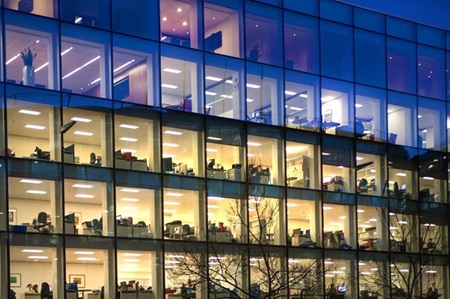 As buildings grow older and their architectural styles grow out-of-date, they take on a certain venerable charm. They feel timeless in a way, yet standing inside them, you can feel yourself practically breathing in history. What you don’t want to breathe in, though, are airborne pathogens or contaminants that can negatively impact your health either by directly making you sick, weakening your body’s defenses against illness, or provoking an allergic reaction.
As buildings grow older and their architectural styles grow out-of-date, they take on a certain venerable charm. They feel timeless in a way, yet standing inside them, you can feel yourself practically breathing in history. What you don’t want to breathe in, though, are airborne pathogens or contaminants that can negatively impact your health either by directly making you sick, weakening your body’s defenses against illness, or provoking an allergic reaction.
In the wake of the COVID-19 pandemic, modern health science has found a direct correlation between indoor air quality and HVAC systems. Businesses operating out of older buildings have a vested interest in making sure their HVAC systems are up to the task of supplying fresh, healthy air to their occupants and safeguarding the health of employees, faculty, customers, and visitors.
However, many older buildings have HVAC systems that aren’t quite up to snuff for these purposes. An HVAC retrofit can bring these venerable buildings and their existing HVAC infrastructure into the future with more energy-efficient and health-conscious air circulation and ventilation technology.
Exploring the Link Between Indoor Air Quality and HVAC Systems
In 2004, scientists studying the SARS epidemic first discovered that improperly configured or designed ventilation infrastructure could spread virus particles throughout a building’s structure. On the flip side, though, a ventilation system that utilizes appropriate filtration technology and is designed to fit a building’s structure inhibits the spread of airborne diseases.
In short, indoor environmental systems depend heavily on ventilation in HVAC systems to maintain high indoor air quality.
Ensuring quality air with HVAC systems means ensuring effective ventilation. Since many older buildings have older HVAC systems, though, their ventilation infrastructure isn’t built with the latest medical insights in mind. The solution to this dilemma? Retrofitting HVAC systems in old buildings to take advantage of the latest insights into human health and innovations in ventilation technology.
Retrofitting HVAC for older buildings integrates the latest advanced technologies, such as smart HVAC systems with remote monitoring and control features. A commercial HVAC retrofit for air quality uses new technology to address the root causes of poor indoor air quality in older buildings, including:
- Lack of air filtration
- Mold or mildew growth
- Lack of HVAC maintenance
- Stagnant air circulation
- Inadequate temperature and humidity control
- Inadequate protection from outdoor pollutants
The Benefits of a Commercial HVAC Retrofit
When you retrofit your HVAC system to optimize your building’s air quality, you will see enormous benefits not just to your occupants’ health, comfort, and productivity but also to your building and your business.
A commercial HVAC retrofit integrates advanced air filtration systems that promote a healthier indoor environment by reducing pollutants, allergens, and pathogens circulating in your building. As a result, your HVAC retrofit not only improves public health but also brings your building in line with modern health and safety regulations. This often has a positive effect on property values for commercial buildings as well.
Ways to Retrofit an Old Building’s HVAC System for Better Indoor Air Quality
An HVAC retrofit can sound like a daunting operation. However, retrofitting does not involve ripping out the old HVAC system and installing an entirely new system. Rather, retrofits can provide any number of improvements by integrating new technologies into old HVAC systems.
The US Office of Energy Efficiency and Renewable Energy, for example, offers the following examples of new technologies that can improve old indoor environmental systems:
- Air economizers
- Demand control ventilation
- Building automation systems
An HVAC retrofit to improve air quality can also involve:
- Upgrading to high-efficiency air filters that capture more airborne particles
- Integrating UV-C light systems that disinfect and eliminate microbial contaminants
- Implementing humidity control solutions that prevent mold growth
- Replacing deteriorating insulation and building materials such as lead or asbestos
- Installing advanced air purification technologies such as electrostatic precipitators or ionization systems
- Sealing and insulating existing ductwork
- Installing monitoring systems to conduct periodic air quality testing and proactively identify and fix potential issues
Is now the right time for an HVAC retrofit?
Improving the quality of air with an HVAC retrofit can lead to dramatic improvements in the health and productivity of your building’s occupants while also reducing your energy and maintenance costs and improving your building’s property values. Making a few simple changes by integrating new technologies into old HVAC systems is often far more cost-effective than a wholesale HVAC upgrade or replacement—and often delivers comparable air quality and efficiency improvements.
However, retrofits are not always the best way to update your building’s ventilation systems. Sometimes, if your HVAC system is old enough, it can be unfeasible or impossible to effectively integrate new technologies. It would be more cost-effective in the long run to simply install a new HVAC system.
To find out if an HVAC retrofit is the right option for improving your indoor environmental systems, have your system assessed by HVAC experts. Chiller Systems Service has provided climate control expertise to businesses of all sizes throughout Metro Denver and the Colorado Front Range since 1997. Contact our experts today and get the HVAC solutions your building needs.

